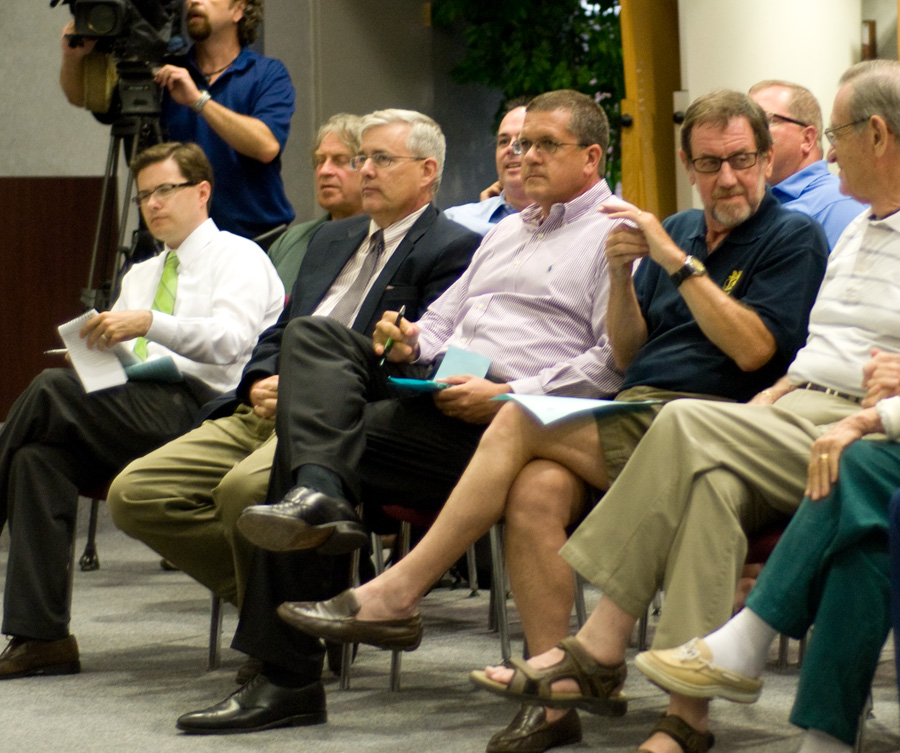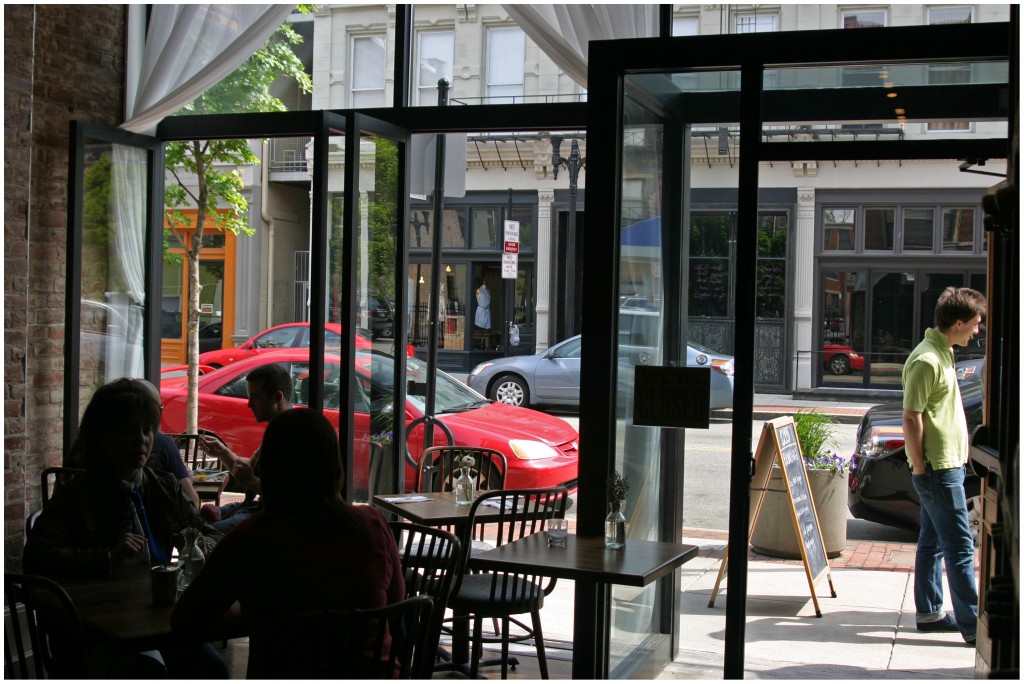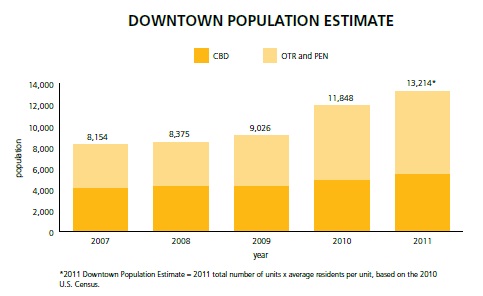America’s anti-tax zealots assert that local taxes are prime motivators in the relocation of people and businesses from one part of the country to another. By their reasoning, the Cincinnati region should be flooded with newcomers, as Cincinnatians enjoy lower rates of taxation than the citizens of nearly any major American metropolitan area.
Case in point is Los Angeles, where LA County voters have approved three separate .5% sales taxes since 1980 to support public transportation and road improvements above and beyond what is budgeted by Caltrans, California’s DOT. This 1.5% combined sales tax funds an enormous bus system and construction of a rail transit network that will soon surpass 100 route miles. Meanwhile in low-tax Cincinnati, we operate a threadbare bus system which in its entirety carries just one-third the daily ridership of Los Angeles’ Red Line subway.
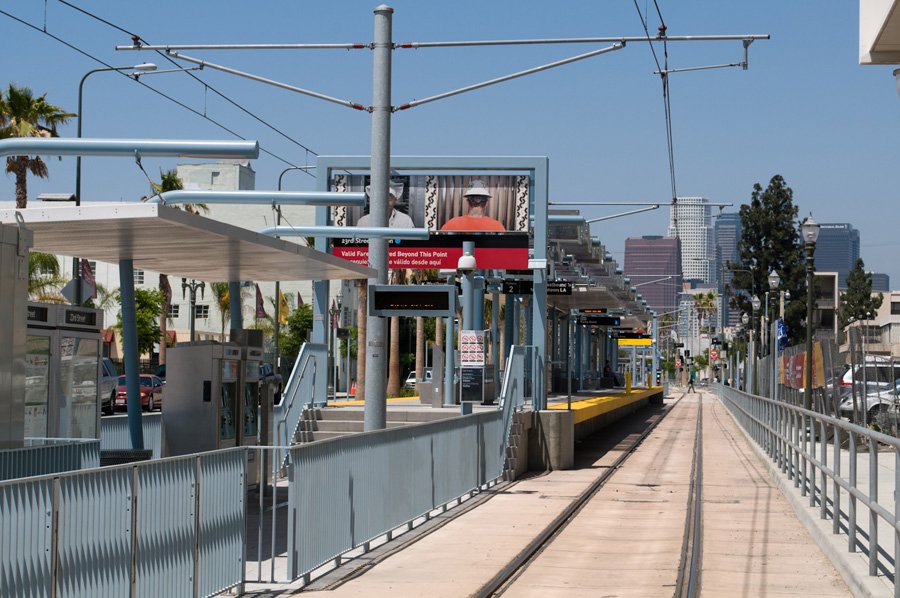
The 23rd Street Station is part of the Expo Line Phase 1 segment which opened earlier this year. Construction work progresses on the Phase 2 segment, and will be completed by 2015. Photograph by Jake Mecklenborg for UrbanCincy.
The revival of rail transit in Los Angeles is an important lesson to Cincinnati: if new rail transit lines can be successful in the city where the world’s largest streetcar system was scrapped and replaced by the world’s largest expressway system, it can certainly be successful here. Moreover, if a city can attract millions of newcomers while taxing them at a higher rate than the places where they originated, the anti-tax argument prevalent in the Cincinnati area is revealed to be a fraud.
Propositions A, C, and Measure R
Public transportation in Los Angeles County is funded by three .5% sales taxes approved in 1980, 1990, and 2008.
Although these three taxes total 1.5%, only .85% can fund rail transit construction projects. Of that sum, .1% is restricted to commuter rail, and only .25% can fund subway tunnel construction. This bizarre stipulation came into effect when the electorate approved the Act of 1998, which prohibited the use of Proposition A funds for subway construction. This act is still effect, but after passage of Measure R in 2008, construction of subway tunnels could resume.
Of the three taxes, Measure R is the most important as it pertains to Cincinnati’s current situation. The additional funds made available by Measure R allowed Los Angeles to accelerate its construction schedule – since 2008 two new light rail lines have opened, the south branch of the Gold Line and the all-new Expo Line. An extension of the Expo Line to Santa Monica is currently under construction, the all-new Crenshaw line broke ground in June 2012, and the long-awaited extension of the Wilshire Boulevard. subway might begin in 2013.
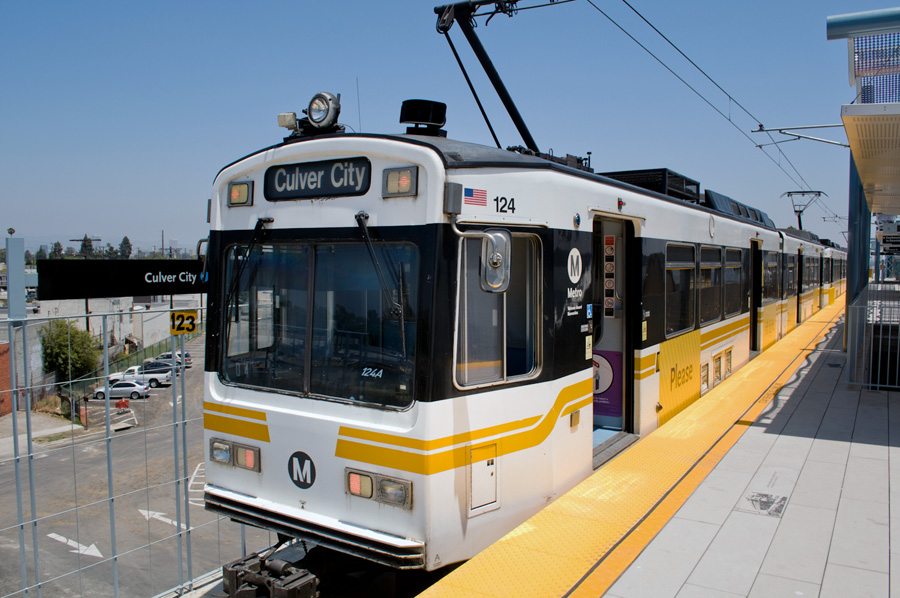
An Expo Line train waits at a recently opened station. Photograph by Jake Mecklenborg for UrbanCincy.
Future Transit and Quality-of-Life Ballot Issues for Cincinnati
Most metropolitan areas around the country are now introducing taxes larger than the half-cent sales tax MetroMoves proposal voted on in Hamilton County in 2002. Such a tax would have generated an estimated $60 million annually split equally between improved bus service and rail construction and operation.
Should Cincinnati use Los Angeles as a model, the $120 million generated by a one-cent tax could fund much more, much faster than the 2002 MetroMoves plan which would have required 30 years to build out the system envisioned.
What’s more, with excess revenue, the FTA federal match process could be bypassed and Cincinnati could break ground quickly on the sort of construction appropriate for our city. Specifically, subway tunnels that might not win federal matching funds could become a reality in just a few years instead of enduring the decades-long struggles seen recently in New York City, Seattle, and elsewhere.

